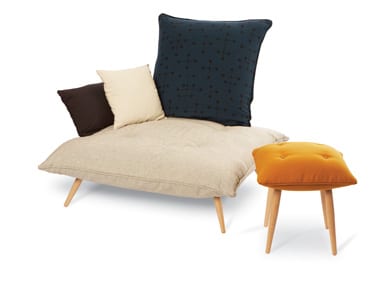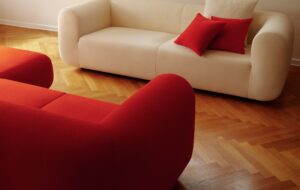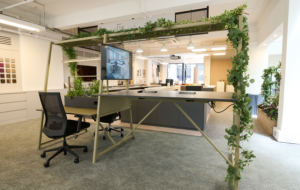
words Johanna Agerman + Anna Bates
We did a bit of a survey this year. After several editorial meetings wondering whether the limited-edition design phenomenon was influencing graduates’ choice of career path, we thought we’d find out. Are young designers less inclined these days to work with industrial manufactures?
The plan was simple and completely unscientific. We took a pile of questionnaires to New Designers, the national graduate showcase in London, and also put one up on our website. We asked students whether they were more interested in industrial production or limited editions. We had a grand total of 125 answers, which yielded the results above.
Obviously, designers are not necessarily going to focus on one market or the other – they’ll follow whatever opportunities come their way. But when we showed our findings to tutors at the UK’s leading design schools, they were taken aback.
“I’m surprised that the figure for industrial design isn’t higher,” says Nick Rhodes, director of studies in product design at Central Saint Martins. “We certainly push the idea of designing for manufacture, even if just produced in limited editions. It is a relatively new phenomenon, the way that limited-edition design is portrayed as something quite glamorous. It might even look relatively easy to achieve. I understand that it is seductive for students.”
The comments students made on the questionnaires confirmed the most obvious advantages and disadvantages of the two ways of working. “Job security, regular wage [perhaps a touch optimistic] and better job prospects” listed one prospective industrial designer, and “more freedom for creativity” wrote an advocate of limited editions.
Given that very few young designers get picked up by galleries, why are graduates finding the limited-editions field so seductive? Apart from the money, the media coverage and the freedom, it’s probably the fact that you can make your name much quicker, at which point manufacturers will approach you – Dutch prodigy Maarten Baas is the perfect example.
But it’s also a new climate out there. Max Lamb, one of the RCA’s most successful recent graduates, says he didn’t even know what limited edition design was when he graduated. He is now represented by a gallery. It’s a similar story for fellow RCA graduate Peter Marigold, who assumed he’d work for a design firm.
“The complication of working with manufacturers doesn’t equal the money you get,” says Marigold. “You really need to push for manufacturers to produce your work, whereas at the moment many galleries come directly to me. Manufacturers should make it easier to get into their world.”
Neil Austin, director of contemporary furniture design at Buckinghamshire Chilterns University College, feels that manufacturers should be taking more of a lead. “Many manufacturers complain about the poor quality of students’ work, but they are themselves really reluctant to get involved,” he says. “This interaction is the most important in giving students the experience they need for working life.”
Lamb is about to launch a side table for Habitat – proving that you can make your way to the high street via the gallery within two years of graduating. “It’s important to show that you have both capabilities,” he says. “After all, I was trained as a product designer.”
One thing is clear: the few graduates who do get picked up by galleries are having a disproportionate effect on the many who won’t.
Top image
Simon Hassan
Vase Family
MA Design Products, Royal College of Art
Subverting the “handle with care” tag usually associated with leather, Hasan boiled and stretched the material in a rather brutal fashion to create this series of unusually shaped vases. He then married the material with acrylic, so that once hardened the leather holds its form even when wet.

Maja Ganszyniec
Easy Plug
MA Design Products, Royal College of Art
A clever redesign of the plug – the rubber stone can be plonked on top of a plughole to seal it and scooped out afterwards. Especially suitable for travelling, the elderly, children and those with motor problems, “it promotes invisible, inclusive design,” says Ganszyniec, “without marking people out.”

Simon Daniel
Pushover Clock
BA Design for Industry, Northumbria University
Pushover Clock is for anyone who hates to see what time it is when they wake in the night. The alarm clock sits face down while you sleep (hiding the time), and when the alarm sounds, you switch off the noise by knocking it over, revealing the time. A little nudge sets it to snooze. We like the Industrial Facility aesthetic, but we’d like it more if it was a working model.

Revital Cohen
Ventilation Dog
MA Design Interactions, Royal College of Art
Cohen proposes that instead of killing racing dogs when they retire, their large chest capacity could be used to power life-support machines. The incredible thing about this concept is that it actually works – using a harness, the dog’s lung movements pump bellows that push air into the patient’s lungs. “The greyhound and his owner develop a relationship of mutual reliance, by keeping each other alive,” says Cohen.

Naoko Kanehira
Cushion Sofa
BA Contemporary Furniture and Related Product Design,
Buckinghamshire Chilterns University College
Winner of the Habitat New Designers prize, which icon helped to judge, Kanehira’s sofa has a tactile aesthetic that reminds us of Hella Jongerius’ work. All held in place by a hidden metal frame, the chair appears as a simple cluster of cushions with four wooden legs sprouting out of the base – perfect Sunday furniture.

Rupert McKelvie
In.fold…
BA 3D Design and Sustainability, University College Falmouth
This flat-pack chair needs no bolts or screws; starting as a sheet, it bends into three dimensions in under a minute. To make it, McKelvie designed a material with a layer of rubber sandwiched between layers of ply-laminate – where the wood is slit, the material folds. The seat (the only separate part) slots on, steadying the whole thing. Our favourite aspect is that it can be reversed if you get bored of the colour.

Olivia Lee
Cult of Design
BA Product Design, Central Saint Martins College of Art and Design, University of the Arts
Lee has literalised the concept of designer as product. Merging the visual characteristics of Karim Rashid, Zaha Hadid and Jaime Hayon with the visual language of their work, she designed a series of dolls that poke fun at celebrity culture. The product has gained cult status on the web – Rashid has requested his own doll. We’d like to show you the Zaha one as well, but some lawyers are playing with it.

Max Frommeld
Adapt
BA Product & Furniture Design, Ravensbourne College of Design and Communication
No more taking a saw to your new piece of furniture when that right-angled corner turns out not to be right-angled. The shelves of this rack are loose wooden slabs held in place by the metal frame structure. Each slab can be manoeuvred to make the unit follow a bend, fit snug into awkward corners, or align with other Adapt units. Frommeld won the BDC New Designer of the Year prize.

Victoria Wilmotte
A Domestic Landscape
MA Design Products, Royal College of Art
We really liked the graphic sensibility of these vases. The designer describes them as a “pure exercise in form” – their two-dimensional appearance makes the drawing and modelling stages look homogeneous.

James Patmore
Armadillo
BA Contemporary Furniture and Related Product Design, Buckinghamshire Chilterns University College
In this grooming unit for men who don’t want to admit they groom, scents and lotions are hidden beneath moving wooden slats, while the utility-styled metal legs make the piece feel more masculine.

Mikael Silvanto
08 Radio
MA Design Products, Royal College of Art
This clever radio makes the ruler-like tuner the centre of attention, while the iPod-style radio moves across it. Ready for the shop floor, we think.

Jamie Ward
Reclaimed
BA Three Dimensional Design, Manchester Metropolitan University
Ward used materials fresh from Manchester’s street corners to make his series of Reclaimed furniture. This table, reminiscent of school desks, took us back in time.

Calum Joughin
Split shelf
BA Contemporary Furniture and Related Product Design, Buckinghamshire Chilterns University College
Joughin reinvented a pretty boring object by playing with the structural potential of the material. It’s the little strip of wood, curled back from the shelf to provide a hook, that drew us to the product.
 Freddie Yauner
Freddie Yauner
The Highest Popping Toaster in the World
MA Design Products, Royal College of Art
Congratulations to Yauner for making it into the Guinness Book of World Records with his compressed gas-powered toaster, which does exactly what the title promises. The designer’s series of Because We Can products also include the Fastest Clock and the Longest Lipstick in the World. His products add experience to the mundane but also satirise excess.

Katie Merrick
Jodie
BA Furniture Loughborough University
This box opens out into a complex vanity unit, complete with stool. It’s a Tardis for makeup. Nifty.
![]()
Ryan Helps
CPR Pad
BA Product Design, De Montfort University
A great piece of life-saving design, this CPR resuscitator should be in all offices, planes, boats and so on, just in case the trained first aider suffers a heart attack – they deserve a chance too. By aligning the pad correctly (as shown), the user will know where to press – a flashing light tells you when, while a “clicking” noise tells you how hard.















